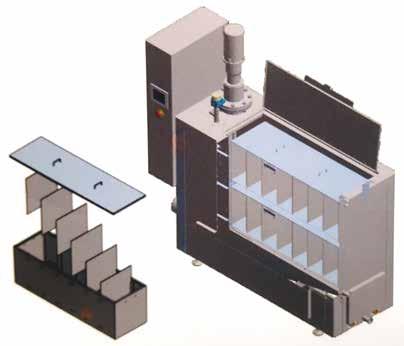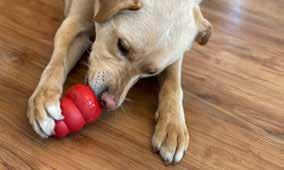
4 minute read
Aquamation: An Environmentally Friendly Alternative to Flame Cremation or Burial
Story and photos by Dr. Kellie Barrett, Kindred Spirits Pet Services
Unfortunately, all pets eventually pass away and families are faced with the decision The “ash” is actually of what to do with their beloved companion’s body. Until recently, pet owners have pulverized bone been limited to burying their friend in the ground or choosing flame cremation. Both fragments left behind processes result in a breakdown of body tissues and leave bone remains, but both after the other organic also come with disadvantages material is burned for the environment. Ground away. Aquamation burial produces methane, also results in bone a greenhouse gas, and can remains that tend to release harmful euthanasia be more brittle as medications or other chemicals they contain only in the soil. These toxic the bone mineral substances can pose a danger calcium phosphate. to the ecosystem as they could The bone remains are be ingested by scavengers that processed into a sandmight dig in the burial area. like powder or “ash” Flame cremation burns fossil that can be returned fuels at 1400-1800 F° and to the family, as with flame cremation. Aquamation can result in up to 20% more releases greenhouse gases and remains than flame cremation as some of the bone is destroyed and expelled into Pet Aquamation Machine other pollutants into the air. the atmosphere through incineration. The bone remains are 100% safe and free of disease, chemicals or pathogens after the aquamation process. Aquamation is a pet aftercare alternative that has no harmful greenhouse gas emissions and does not contaminate the soil or ground water. It uses no fossil fuels Pet families can use the aquamated remains to memorialize their dear friend in and uses less than 10% of the energy of traditional flame cremation. It is a water- a variety of meaningful ways just like with cremation “ashes”. The most common based process known scientifically as alkaline hydrolysis and was patented more methods are storing them in an urn, scattering or burying them in a special place. The than 130 years ago. The modern technology has been in place for over 25 years powdered remains can also be mixed into soil when planting a memorial garden, and is used for both animal and human disposal in prestigious hospitals like Mayo tree or plant. They can be incorporated into glass jewelry or art, tattoos, paintings, Clinic and many other major universities across the country like UCLA and Duke ceramics or solidified into parting “stones”. The remains can be made into synthetic University. Aquamation is approved for use in the human funeral industry in more diamonds and even fireworks. They can be mixed with concrete for steppingstones, than 20 states. statues and even memorial reefs in the ocean. This process is essentially an accelerated version of what takes place during natural Pet aquamation cost is comparable to flame cremation, which varies among decomposition in the soil, similar to Mother Nature. The body is placed inside a crematories and veterinary clinics. Just like with cremation, pet families can choose stainless-steel machine designed specifically for pets. A combination of gentle water to not have the aquamated bone remains returned to them and the pet is comingled flow, warm temperature, and alkali chemical with other pets in the machine. This is a less are used to accelerate the natural process of expensive option and can vary by pet weight. tissue breakdown. The amount of water used Pets can also be aquamated individually as they during aquamation is low; about the same are placed within segregated compartments in amount a family would use to give the pet the machine, completely separated from other a bath. The alkalis make up only 5% of the pets. There is no comingling of the remains water solution and are the same alkalis used which are returned to the family in an urn or in cosmetic products, body washes, and even container. Individual aquamation is more food preparation. After 18 hours, the alkali has costly and varies according to the size of the been completely consumed and all organic pet and the type of urn selected. material in the body is reduced to its most basic building blocks, leaving a sterile water solution Aquamation is similar to flame cremation in and inorganic bone remains. The water solution that bone remains result from both processes is recycled or can be returned to nature as that can be memorialized in a variety of ways. a liquid fertilizer containing micronutrients, However, aquamation is a much slower process, amino acids and sugars that are beneficial to more natural and gentler than incineration by the environment. fire and does not harm the environment. Pet aftercare is a choice and families can seek the After flame cremation, some pet families best option for them. choose to have the “ashes” returned to them.
Advertisement
Aquamated Bone Remains








